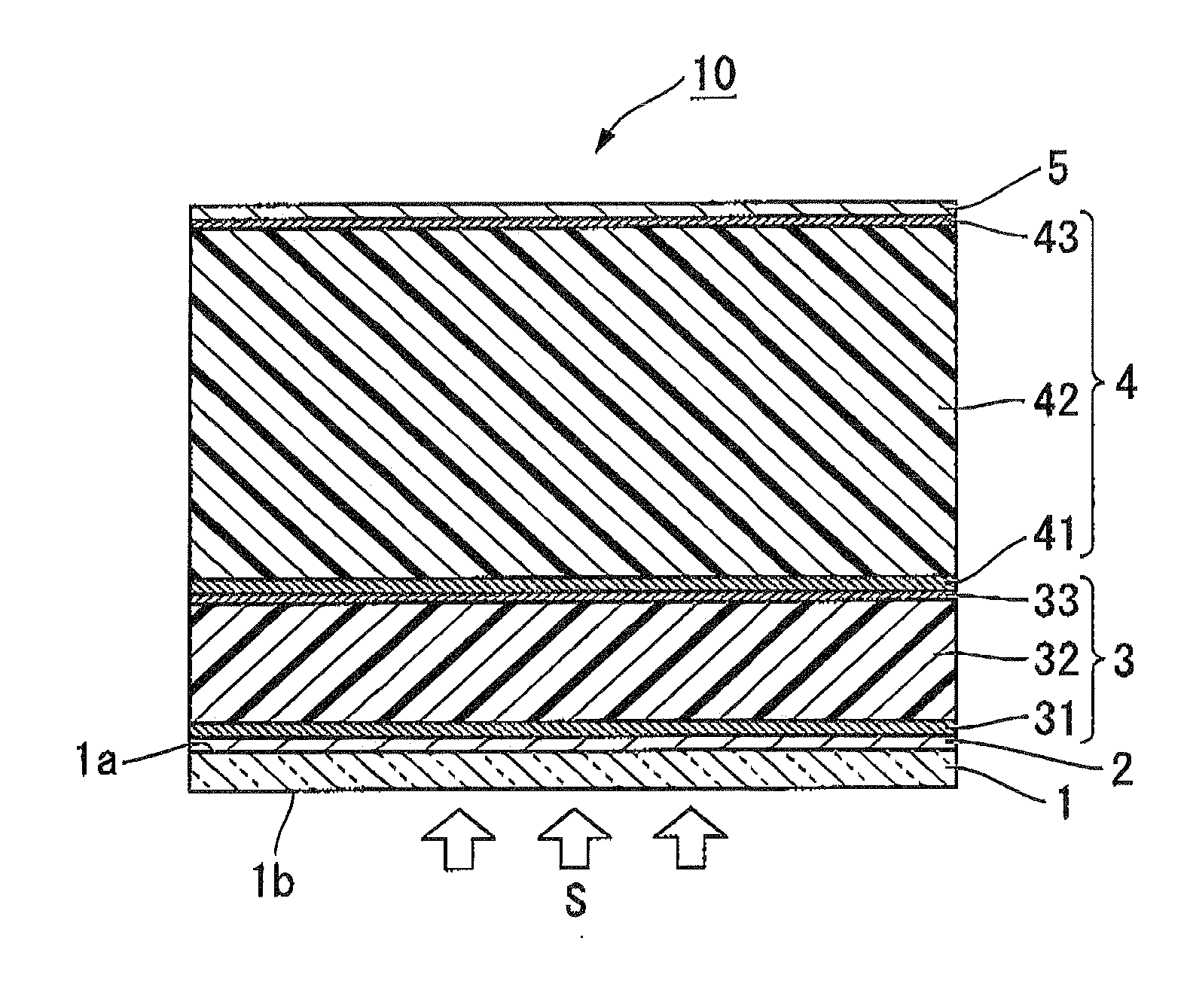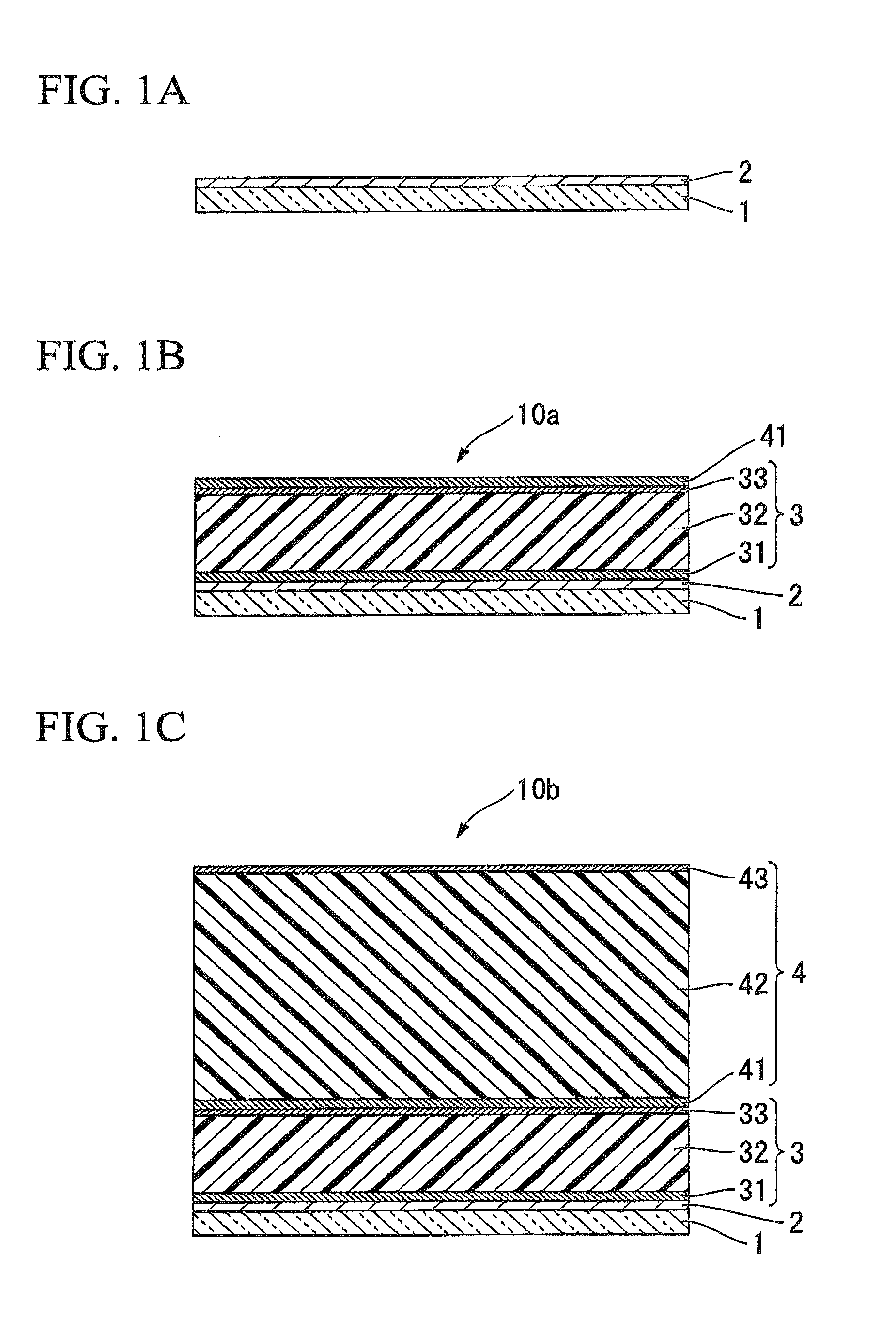Photoelectric conversion device manufacturing method, photoelectric conversion device, and photoelectric conversion device manufacturing system
a technology of photoelectric conversion device and manufacturing method, which is applied in the manufacture of final products, sustainable manufacturing/processing, coatings, etc., can solve the problems of large amount of energy spent, high manufacturing cost, and significant cost increase, and achieve the capability of a thin-film photoelectric conversion device and suppress an indistinct junction. , the effect of excellent impurity profil
- Summary
- Abstract
- Description
- Claims
- Application Information
AI Technical Summary
Benefits of technology
Problems solved by technology
Method used
Image
Examples
experimental examples
Next, according to the photoelectric conversion device manufactured by the photoelectric conversion device manufacturing method related to the present invention, experiments were performed as described below.
The photoelectric conversion device manufactured by each Experimental Example and the manufacturing condition therefor is as follows.
In all of Experimental Examples described below, the photoelectric conversion device was manufactured by use of a substrate having lengths of 1100 mm and 1400 mm
(1) In Experimental Example described below, the relationship between the length of time a p-layer of a second-photoelectric conversion unit being exposed to an air atmosphere and photoelectric conversion characteristics was evaluated.
experimental example 1
In Experimental Example 1, a p-layer and an i-layer which are composed of an amorphous silicon (a-Si) based thin film were formed on the substrate as a first-photoelectric conversion unit, an n-layer including microcrystalline silicon (μc-Si) was formed on the i-layer, and a p-layer that includes microcrystalline silicon (μc-Si) and constitutes a second-photoelectric conversion unit was formed.
The layers described above were continuously formed in a vacuum atmosphere, and reaction chambers in which the layers are formed were different from each other.
Thereafter, the p-layer of the second-photoelectric conversion unit was exposed to an air atmosphere, and the p-layer of the second-photoelectric conversion unit was subjected to a hydrogen radical plasma processing.
Subsequently, an i-layer and an n-layer, which constitute the second-photoelectric conversion unit and are composed of microcrystalline silicon (μc-Si), were formed.
In Experimental Example 1, the p-layer, the i-layer, and th...
experimental example 2
In this Experimental Example, in a manner similar to Experimental Example 1, after the p-layer, the i-layer, and the n-layer of the first-photoelectric conversion unit, and the p-layer of the second-photoelectric conversion unit were formed on the substrate, the p-layer of the second-photoelectric conversion unit was exposed to an air atmosphere for five minutes.
The p-layer was subjected to the hydrogen radical plasma processing for sixty seconds under conditions in which the substrate temperature was 170° C., the power source output was 500 W, the internal pressure of the reaction chamber was 400 Pa, and H2 which serves as a processing gas was 1000 sccm.
Subsequently, in a manner similar to Experimental Example 1, the i-layer and the n-layer of the second-photoelectric conversion unit were formed.
PUM
| Property | Measurement | Unit |
|---|---|---|
| frequency | aaaaa | aaaaa |
| frequency | aaaaa | aaaaa |
| frequency | aaaaa | aaaaa |
Abstract
Description
Claims
Application Information
 Login to View More
Login to View More - R&D
- Intellectual Property
- Life Sciences
- Materials
- Tech Scout
- Unparalleled Data Quality
- Higher Quality Content
- 60% Fewer Hallucinations
Browse by: Latest US Patents, China's latest patents, Technical Efficacy Thesaurus, Application Domain, Technology Topic, Popular Technical Reports.
© 2025 PatSnap. All rights reserved.Legal|Privacy policy|Modern Slavery Act Transparency Statement|Sitemap|About US| Contact US: help@patsnap.com



